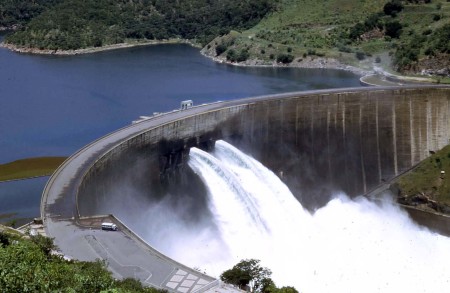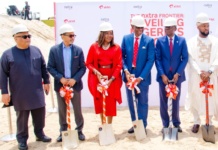Mega power deals sealed by Zimbabwe’s President Mugabe in China last year have taken off, with construction already underway at key projects expected to add 1,500 megawatts to the nation’s grid.

The projects are Kariba South Hydro Power Station (300MW), Hwange Thermal Power Station expansion (600MW) and construction of the Gwayi-Shangani Thermal Power Station (600MW), all scheduled for completion by 2018.
China Exim Bank recently released $80 million advance payment to Sinohydro for the expansion of Kariba South Hydro Power Station. As a result, manufacturing of turbines and generators for the $533 million project has started in China.
Sinohydro was also contracted to expand Hwange Thermal Power Station at a cost of $1,1 billion. It is this month mobilising on site to do “pre-commencement works” while Government officials are soon expected to leave for China to finalise funding for the project.
China Africa Sunlight Energy (CASECO), which won the bid to construct the $2 billion Gwayi-Shangani Thermal Power Station, has completed clearance work on site, with actual construction expected to commence in July. An official at Sinohydro who spoke on condition of anonymity said construction work was now at full throttle following the release of funds by China Exim Bank.
“The project is now at full throttle because the manufacturer has started manufacturing turbines and generators in China after that money was released,” he said, adding: “We are also using part of the money on the Zimbabwean side to buy some of the material here and set up. We are at the moment working on tunnels excavation and we have already achieved 300 metres for the longest tunnel while the other four tunnels are still under excavation. On the working site, we have about 70 Chinese engineers and about 400 local technicians and labourers.”
The projects are expected to have multiple benefits that encompass job creation in line with the Zimbabwe Agenda for Sustainable Socio Economic Transformation.
Zimbabwe Power Company managing director Engineer Noah Gwariro said the contractor was mobilising on -site to do initial works. He said a team from the Ministry of Finance and Economic Development and ZPC would soon be dispatched to China to finalise funding.
“The contractor is moving on site this month to have pre-commencement work, that is, things like ground and soils have to be tested. This will lay the foundation for them to do a detailed design lay out.
“We are talking to China Exim Bank and we have provided them with the information they need. If all goes well a team will be in China soon because what is now left is for the Minister of Finance to sign for the loan for that contract.”
CASECO deputy general manager Retired Colonel Charles Mugari said clearance of the concession at Gwayi was complete, paving way for construction of a magazine plant for explosives storage.
“In the meantime, we have doubled our efforts to finalise the financial closure because we have been to ZERA (Zimbabwe Energy Regulatory Authority) where they gave us a rate that we can work with,” said Rtd Col Mugari, adding: “All things being equal by March this year we should start sinking mine shafts while at the same time hope that by July we can start construction of the power station.
“Our general manager is already in China negotiating with various financial institutions.”
CASECO executive board secretary Mr Isaac Chihuri added that all was on course for the first mega independent power producer to kickstart work on the ground.
“As we speak, parties are negotiating with Sinosure (China Export and Credit Insurance Corporation) to ensure quick financial closure. But Industrial and Commercial Bank of China has already been identified as a major conduit to the financing of the project.
“We will be sending a delegation to China soon to discuss security measures with Sinosure. The power project will commence as soon as financial closure is achieved,” said Mr Chihuri.
The integrated Gwayi-Shangani project will see the company extract coal, construct a 600MW thermal power station and install a power transmission line.
To end the chronic power shortages, Zimbabwe is working on a host of public and private expansion projects, chief among them Kariba and Hwange.
The SADC region faces serious power shortages between now and 2018 due to lack of investment and implementation of regional power projects.
Zimbabwe generates about 1 300 megawatts against a peak demand of 2 200 MW.









